





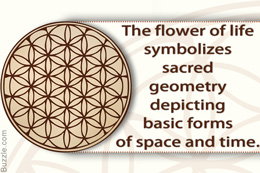 Drunvalo MelchizedekThis New Age Movement author is understood to have coined the term 'flower of life' around the 1990s.Religious beliefs all the world over are known to have been sustained for centuries. It can be understood that this was possible due to the various tools employed by these faiths as a medium. The reason for calling certain things 'tools', is that, they have aided the process of comprehension for the masses as to what comprises 'our' belief systems.
Drunvalo MelchizedekThis New Age Movement author is understood to have coined the term 'flower of life' around the 1990s.Religious beliefs all the world over are known to have been sustained for centuries. It can be understood that this was possible due to the various tools employed by these faiths as a medium. The reason for calling certain things 'tools', is that, they have aided the process of comprehension for the masses as to what comprises 'our' belief systems.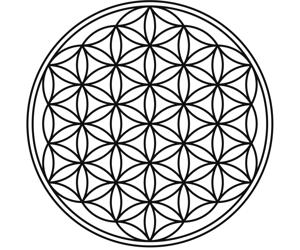 To describe its structure, it is a geometrical shape consisting of overlapping circles, which are spaced out in six-fold symmetry to give it the look of a flower. As is seen from the image above, the flower reflects perfection and harmony. Taken to be a shape known to all religions of the world, it has been more recently named as 'sacred geometry' by the Pagans. So, this particular design is known to depict the fundamental forms of space and time.As mysterious as it may sound, the flower of life is a concept that explains or tries to establish the patterns of the creation of this world; the world as it has emerged from the 'Great Void'.A crucial implication of this shape is its display of how all beings are interconnected. So, it is said to be the ultimate registry with all information of living beings, called an 'Akashic Record'. As per theosophy, an Akashic record maintains a record of all occurring thoughts, words, and actions, as they are impressed upon the 'Akasha' (Ether). In Hinduism, this 'Akash tattva' is considered the primal natural element from which the other four (fire, water, earth, and air) evolved.You may notice the hexagonal pattern, where the center of every circle lies on the circumference of six other surrounding circles of the same diameter. Looking at it as numbers, there are in all 19 complete circles encircled by one big circle on the outside.The following sections discuss some more symbolic arrangements derived from the original form.Seed of Life
To describe its structure, it is a geometrical shape consisting of overlapping circles, which are spaced out in six-fold symmetry to give it the look of a flower. As is seen from the image above, the flower reflects perfection and harmony. Taken to be a shape known to all religions of the world, it has been more recently named as 'sacred geometry' by the Pagans. So, this particular design is known to depict the fundamental forms of space and time.As mysterious as it may sound, the flower of life is a concept that explains or tries to establish the patterns of the creation of this world; the world as it has emerged from the 'Great Void'.A crucial implication of this shape is its display of how all beings are interconnected. So, it is said to be the ultimate registry with all information of living beings, called an 'Akashic Record'. As per theosophy, an Akashic record maintains a record of all occurring thoughts, words, and actions, as they are impressed upon the 'Akasha' (Ether). In Hinduism, this 'Akash tattva' is considered the primal natural element from which the other four (fire, water, earth, and air) evolved.You may notice the hexagonal pattern, where the center of every circle lies on the circumference of six other surrounding circles of the same diameter. Looking at it as numbers, there are in all 19 complete circles encircled by one big circle on the outside.The following sections discuss some more symbolic arrangements derived from the original form.Seed of Life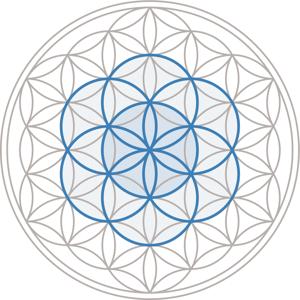 This is a formation where the inner seven circles are placed in six-fold symmetry. As the name suggests, the seed of life forms the basic element of the whole design. In Christianity and Judaism, this stands for the 7 days of creation, when the Judeo-Christian God created life.The vesica piscis is the intersection of two circles of same radius, with the center of each circle lying on the circumference of the other. This shape was the accomplishment of the first day, to which one circle was added per day, leaving the seventh day to be the day of rest, or sabbath.
This is a formation where the inner seven circles are placed in six-fold symmetry. As the name suggests, the seed of life forms the basic element of the whole design. In Christianity and Judaism, this stands for the 7 days of creation, when the Judeo-Christian God created life.The vesica piscis is the intersection of two circles of same radius, with the center of each circle lying on the circumference of the other. This shape was the accomplishment of the first day, to which one circle was added per day, leaving the seventh day to be the day of rest, or sabbath.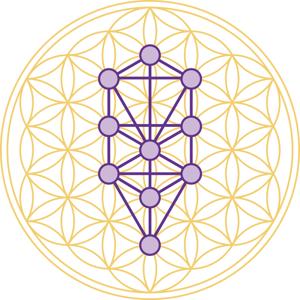 The tree of life is commonly associated with the Kabbalah, or the esoteric discipline and school of thought in Judaism. In Kabbalah tradition, it is used to understand the nature of God. The tree of life symbol refers to the idea of common descent. This, being a universal theme in all theologies, is found to be adopted by some Christians, Jews, Hermeticists, and pagans. It is also believed that the 'tree of life' of the Kabbalah is similar to the 'tree of life' as given in Genesis 2:9.Fruit of Life
The tree of life is commonly associated with the Kabbalah, or the esoteric discipline and school of thought in Judaism. In Kabbalah tradition, it is used to understand the nature of God. The tree of life symbol refers to the idea of common descent. This, being a universal theme in all theologies, is found to be adopted by some Christians, Jews, Hermeticists, and pagans. It is also believed that the 'tree of life' of the Kabbalah is similar to the 'tree of life' as given in Genesis 2:9.Fruit of Life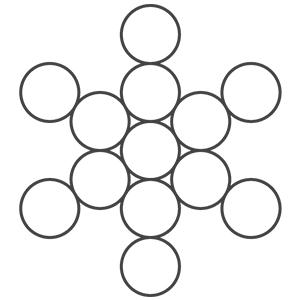 Composed of thirteen circles, we can point out this pattern if we look at the 'flower of life' design keenly. This structure is thought to be the 'blueprint' of the universe. The thirteen spheres are considered as the sacred pattern of the universe. It is the origin of everything that exists, and includes the base of every other design: an atom, molecular structure, and life form. Also, it incorporates thirteen systems of information. The significance of the fruit of life is hidden in the center points of all the circles seen in this image. These centers lay the basis for the structure of the metatron's cube.Metatron's Cube
Composed of thirteen circles, we can point out this pattern if we look at the 'flower of life' design keenly. This structure is thought to be the 'blueprint' of the universe. The thirteen spheres are considered as the sacred pattern of the universe. It is the origin of everything that exists, and includes the base of every other design: an atom, molecular structure, and life form. Also, it incorporates thirteen systems of information. The significance of the fruit of life is hidden in the center points of all the circles seen in this image. These centers lay the basis for the structure of the metatron's cube.Metatron's Cube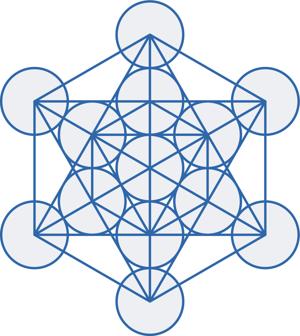 If every circle's center in the 'fruit of life' design is connected to all other centers with a line, seventy-eight lines are formed in all, forming the metatron's cube. The five platonic solids are revealed by this structure. Platonic solids refer to one of the five regular solids: the Star Tetrahedron (Star of David), hexahedron or cube, octahedron, dodecahedron, and icosahedron. These geometrical shapes are spiritually perceived as the standard template forms, which have given birth to all life forms. They are significant as the five main building blocks of all organisms. Believed by some to be a holy glyph, the cube helps keep evil spirits away.Flower of Life Across the WorldThe flower of life is found...
If every circle's center in the 'fruit of life' design is connected to all other centers with a line, seventy-eight lines are formed in all, forming the metatron's cube. The five platonic solids are revealed by this structure. Platonic solids refer to one of the five regular solids: the Star Tetrahedron (Star of David), hexahedron or cube, octahedron, dodecahedron, and icosahedron. These geometrical shapes are spiritually perceived as the standard template forms, which have given birth to all life forms. They are significant as the five main building blocks of all organisms. Believed by some to be a holy glyph, the cube helps keep evil spirits away.Flower of Life Across the WorldThe flower of life is found...Copyright © www.100flowers.win Botanic Garden All Rights Reserved